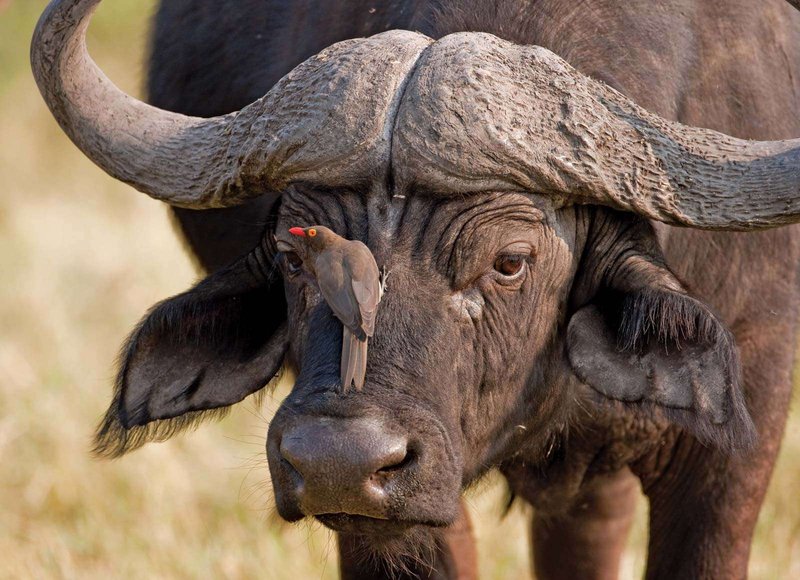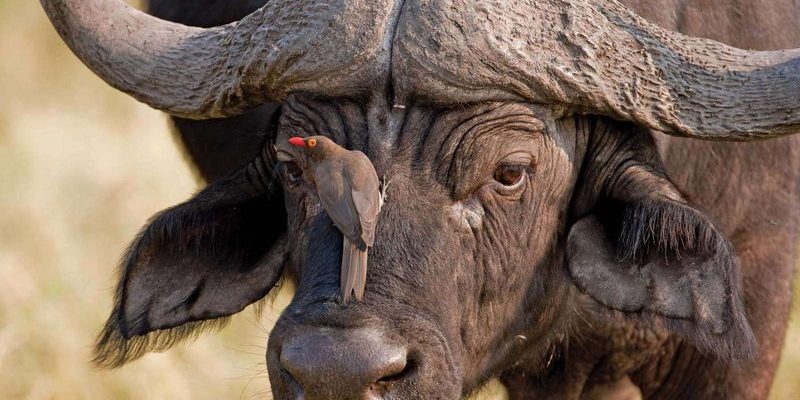
In a world where we often romanticize the wild—or fear it—understanding the true nature of the African buffalo is essential. They’re not just big, lumbering beasts; they are complex animals with personalities and behaviors that can sometimes lead to dangerous situations. So, let’s dive into this captivating topic to see what really makes these buffalo tick—and whether they pose a real threat to humans.
The Nature of the African Buffalo
African buffalo, also known as *Syncerus caffer*, are large, hoofed mammals found throughout sub-Saharan Africa. They belong to the Bovidae family, alongside cows and antelopes, and can weigh anywhere from 1,000 to 2,000 pounds. With their distinctive, curved horns and stocky bodies, they certainly command attention in any savanna landscape.
One fascinating aspect of the African buffalo is their social structure. They often travel in herds, which can consist of anywhere from a dozen to several hundred individuals. This social behavior provides them with safety in numbers, making it harder for predators to target any single buffalo. Here’s the thing: their group dynamics also play a role in how they react to threats, including humans. If one buffalo feels threatened, it may signal to the entire herd to be on high alert.
You might be wondering how these animals interact with their environment. They graze on grasses and can be found near water sources. However, they are also known to be adaptable, thriving in both open grasslands and dense bush. Their ability to navigate various habitats can sometimes bring them into contact with humans, which is when things can get tricky.
What Triggers Aggression in African Buffalo?
Let’s face it: no animal wants to feel threatened. African buffalo can become aggressive when they perceive danger, especially if they are protecting their young or their herd. Imagine a parent standing between their child and an oncoming car; it’s a kind of instinctive protection that kicks in.
Common triggers for aggression include:
- Protecting Young: Like many animals, buffalo are fiercely protective of their calves. If they sense a threat, they will charge without hesitation.
- Surprise Encounters: If someone unexpectedly stumbles upon a buffalo herd, they might react defensively, leading to aggressive behavior.
- Herd Dynamics: The collective response of a herd can escalate quickly. If one buffalo feels threatened, others will follow suit.
The key takeaway is that while buffalo may seem calm, they can quickly switch to a defensive mode. This reaction can be quite dangerous for humans who might not recognize the signs of impending aggression. Staying aware and understanding their behavior can help prevent dangerous encounters.
Are Humans Often Attacked by African Buffalo?
While attacks on humans are not an everyday occurrence, they do happen, often with severe consequences. The African buffalo is responsible for more hunter fatalities than any other African animal, and this isn’t just due to their size. It’s often because they are underestimated by humans.
So, why are they so dangerous? Here are a few reasons:
- Surprise Element: Many people don’t realize how fast and agile these animals can be, capable of charging at speeds up to 30 miles per hour when provoked.
- Inherent Strength: Their sheer size and power make them lethal when they decide to charge. A single blow can be fatal.
- Fearlessness: Buffalo are known to stand their ground against predators, including lions. This fearlessness extends to humans as well, meaning they often won’t back down when challenged.
Real examples can help illustrate the danger. There have been documented cases of hunters being gored by buffalo, as they underestimated the animal’s potential for aggression. Many of these encounters occur in hunting situations where buffalo are wounded and become more dangerous as they fight for their lives.
Safety Measures Around African Buffalo
If you’re planning to visit areas where African buffalo roam, it’s essential to understand how to keep yourself safe. Here are a few practical tips for avoiding dangerous situations:
- Stay in Your Vehicle: If you’re on a safari, remain in your vehicle. Buffalo can be unpredictable, and it’s best to observe from a safe distance.
- Respect Wildlife Guidelines: Follow the rules set by guides or parks. They have extensive knowledge of animal behavior and can help keep you safe.
- Be Aware of Your Surroundings: Always be vigilant. If you spot buffalo nearby, give them space and avoid approaching them.
In many cases, understanding the behavior of the African buffalo can prevent dangerous encounters. By respecting their space and observing from a distance, you can enjoy the beauty of these magnificent creatures without putting yourself at risk.
Comparing African Buffalo to Other Large Mammals
When thinking about dangerous animals in Africa, it’s helpful to compare the African buffalo to other large mammals. Let’s look at how they stack up against animals like elephants and hippos in terms of danger to humans.
– African Elephants: While generally gentle, elephants can be very dangerous if they feel threatened. Males in musth or mothers with calves are particularly aggressive.
– Hippos: Surprisingly to many, hippos are among the most dangerous animals in Africa. They are responsible for more human fatalities than lions, primarily due to their territorial nature in water bodies.
What sets the African buffalo apart is their mix of social behavior and innate defensiveness. They can be particularly unpredictable, and that makes them a unique risk.
So, can the African buffalo be dangerous to humans? The simple answer is yes—but with a big caveat. They’re not out hunting for humans, but rather responding to perceived threats. With their strong herd instincts and protective nature, they can become aggressive if they feel cornered or threatened.
Learning about these animals enhances our understanding of their behaviors and helps ensure safety when encountering them. By respecting them and recognizing their power, we can coexist with the incredible wildlife that Africa has to offer.
In the end, the African buffalo is a reminder that wild animals deserve our respect. When we understand their nature, we approach them with the awareness that not all encounters have to be dangerous. Just like with any great force of nature, knowledge is key to staying safe.

